BMW
|
1916 - present |
Country: |
 |
|
Dixi
Dixi. Ever heard of them? Well most likely
you have if you’re a fan of the Bayerische Motoren
Werke. Although BMW would evolve from a grouping of
several companies in the early part of last century,
the most influential was Dixi, who were very astute
in their ability to obtain the license to assemble British
Austin Sevens in Germany.
It was in 1928 that BMW officially
took over Dixi, and they would continue to manufacture
the Austin Seven, naturally rebadged as a BMW. Nearly everyone now knows that the famous BMW badge
was a stylized rendering of a propeller at speed, used
primarily because, apart from motorcycles, BMW's principal
product was aircraft engines (most finding their way
into German Luftwaffe’s aircraft during the 1930s
and 1940s).
The 303, And The Kidney Style Grille
It would take BMW until 1933 to develop their own design,
the “303”, using a 1173cc six-cylinder engine
good for 30bhp. This car was the first to use the famous
'kidney' style grille, which has featured on nearly
every BMW car, in one form or another, ever since.
The
“303” was superseded by the “315”
in 1934, now fitted with a 1490cc engine, but the following
year it too would be replaced by the “319”
with a 1911cc 45bhp engine. All were built from a tubular
chassis frame, very advanced for the time, and allowing
BMW to further develop the more sporting “329”
of 1936.
The 328 had a streamlined, curvaceous, two-seat body
style, independent front suspension and hydraulic brakes.
Mechanical improvements included the development of
a new
cylinder head with opposed
valves and part-spherical
combustion chambers, the
valves being operated by a
complicated cross-pushrod arrangement.
Three downdraught
Solex carburettors helped the now enlarged 1971cc engine
to develop around 80bhp, and make the “328”
good for a top speed of around 95 mph (over 100 mph
was attainable if the engine was tuned for competition
work). But unlike the Dixi built Austin Seven, the “328”
was particularly expensive, and only 461 were sold before
production ended at the outbreak of the war.
The 328 Gains A Stellar Reputation
Despite the short lifespan of the car, and limited number
manufactured, the “328” quickly gained a
reputation on the circuits of Europe as a stellar race
car, even winning its debut race at the Eifelrennen
in 1936. In 1937 a well known sports editor for Autocar
magazine would achieve over 100 mph at Brooklands in
the UK, and the following year the 2 litre class of
both the
Spa 24 Hour and Le Mans races would be won
by BMW “328’s”.
Despite the factory being busy manufacturing for the
German war effort, they were able to manufacture 5 purpose
built 328s for inclusion in the 1940
Mille Miglia –
as racing in Italy would not come to a halt until they
too joined the Axis. Two of the cars had streamlined
closed coupe bodies, while the remaining three had a
streamlined open two-seater style.
To ensure their competitiveness,
BMW developed extremely lightweight frames, and refined
the engines boosting power from 80 to around 135bhp!
The cars were naturally very successful, given that
the British teams were not represented and it became
an all German/Italian affair. Only one car retired,
the remaining four finishing well up the leader board
and Huschke von Hanstein, who would later take a posting
as Porsche's Competitions Manager, winning the race
outright – with an average speed of 100mph.
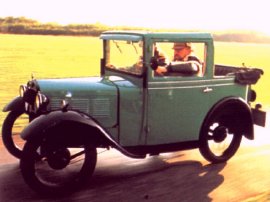
Although BMW would evolve from a grouping of
several companies in the early part of last
century, the most influential was Dixi, who
obtained the license to assemble British Austin
Sevens in Germany...
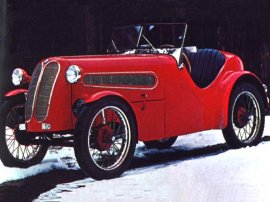
The Dixi Roadster was the forebear of many great
sports-cars to come...
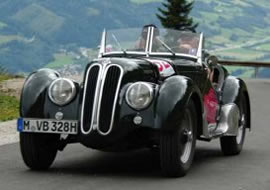
Good performance but oh-so-expensive, only 461
328's would be built...
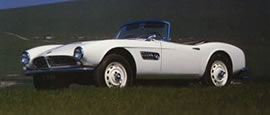 The 507 was styled by Count Albrecht Goertz,
and could be ordered as either an open car
or hardtop coupe... The 507 was styled by Count Albrecht Goertz,
and could be ordered as either an open car
or hardtop coupe...

The "CS" series are arguably the prettiest
and most collectable of BMW's...
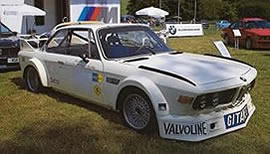
Unfortunately the 3.0CSL was available as a
left hand drive only...
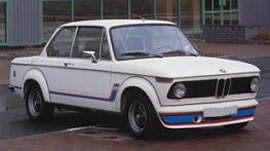
The 2002 Turbo proved BMW 4 cylinder engines
could offer performance as well as reliability
and durability...
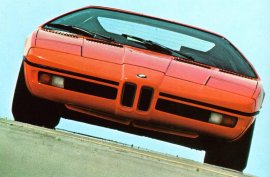
The mighty M1 owes much to Lamborghini, Marchesi
and Baur...
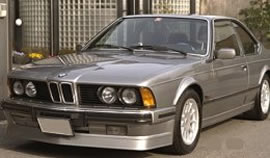
Previously overlooked by serious collectors,
the 635CSi is fast becoming sought after and
should prove a wise investment... |
BMW and EMW, A Match Not Made In Heaven
Unlike other German auto manufacturers, BMW were not
able to enter postwar car production immediately after
the war, taking until 1952 to be in a position to begin
manufacture. It is worth noting the emergence of Eisenacher
Motoren-Werke, or EMW, following the end of the war.
The East German company continued to build cars from
a former BMW plant and, for a time, continued to trade
and operate as BMW but, despite the existence of the
iron curtain, legal action from the West forced EMW
to change their name. Another oddity is BMW’s
licensing of the Iso Isetta "Bubble Car" in
1955.
Looking more like a novelty than a real car by
today's standards, the vehicle was in fact way ahead
of its time and proved to be very popular in Germany,
taking on rivals Heinkel and Messerschmitt. Even today,
with the advent of the Mercedes Smart car, manufacturers
realize the importance of having a small economical
city car available.
With folding roof and wrap around rear window, the
driver and passenger entered via a front hinged door
that also lifted the
steering wheel when opened. Built
with 4 wheels for the local market, some 3 wheel versions
were manufactured for the export market. Powered by
BMW's 247 or 297 cc single cylinder motor, the vehicle
had a top speed over 50 mph and was the forebear to
such vehicles as the BMW 600 and 700.
The 501 Signals BMW's Return
But BMW’s first “traditional” car
following the war was the “501” saloon,
and while it looked new on the outside, BMW engineers
stuck with the pre-war 1971cc engine. The same chassis
and bulbous body would morph into the “502”
in 1954, but now some serious performance was on offer
courtesy of a new overhead valve 2580cc V8 engine.
Using
aluminium
cylinder heads, the engine was good for around
100bhp and it was on the basis of this car that BMW
later offered two more sports-cars, the 3168cc Type
503 Cabriolets/Coupe, and the short-wheelbase two-seater
“507”, with a 150bhp version of this engine.
The 507 was styled by Count Albrecht Goertz, and could
be ordered as either an open car or hardtop coupe. Its
chassis was a shortened version of the 501/502/503 design,
featuring a mainly tubular construction with box-section
members. Independent front suspension was by longitudinal
torsion bars and wishbones, the live rear axle also
having torsion bars and radius arm location.
Standard
versions of the 507 could do the 0-60 mph dash in around
11 seconds, the car being good for a top speed of 135mph.
overall fuel consumption was estimated at 17mpg. Even
so, the 507 was not a commercial success; considered
by most as far too expensive, BMW dealerships were bereft
of customers and so in 1959, after only 253 examples
had been built, the 507 was dropped.
The Bertone Styled 3200CS
In the early 1960’s BMW would go on to build
arguably the prettiest of their designs and one of the
most collectable, the bigger and bulkier “
Bertone”
styled 3200 CS. But despite good looks and sizzling
performance, the prohibitive costs would see only 603
manufactured. Management, wisely, decided to invest
heavily on the development of a new range four-cylinder
saloon cars.
The first sporty car to come from this
pedigree was the 2 litre 100/120bhp 2000C/CS Coupe,
which was assembled for BMW by Karmann at Osnabruck.
These cars inherited the new BMW six-cylinder engines
for
1969, and by
1971 had a 2985cc engine good for 200bhp,
and were dubbed the “3.OCSi”.
It would seem
that while BMW knew that they commercially needed a
4 cylinder car for mass-market appeal, they simply couldn’t
resist the temptation to continue to build fine 6 cylinder
sports-cars. One of the most prized collector BMW’s is the
3.0CSL, built to go head -to-head with Ford's fabulous
new “
Capri” in touring car racing (which
incidentally say a lot for the Capri!).
Obviously more
powerful, the 3.OCSL also used many light alloy body
panels. The final development of this design was affectionately
known as the “Batmobile”, although disappointingly
only 39 would be built; all featuring large front and
rear spoilers along with other mechanical refinements.
In touring car racing these cars would remain seriously
competitive until the late 1970's.
The Homologation Special, With A Little Help From Lamborghini
To follow up this success, in
1976 BMW would produce
a new series of coupes, the “6-Series”.
But the designers had favoured comfort over weight, and
the now “fat” performance BMW models were
considered by most as more a “Grand Tourer”
than Sports. BMW must have thought so too, and when
inevitably drawn to the race circuits of Europe they
would develop a homologation special, interestingly
originally designed and developed for BMW by Lamborghini.
The mighty M1 had a multi-tubular chassis, all-independent
suspension, a fibreglass body with mid-engine mounting
and, best of all, a wonderful 24 valve 3.5 litre version
of BMW's racing 'six,' good for a healthy output of
277bhp. Styling had been by Giugiaro, and construction
of the cars was originally to have been at Lamborghini,
but following financial difficulties with the Italian
marque assembly was taken on by Baur of Stuttgart.
The
M1, though revealed in
1978, was still not ready to
go on sale at the time, and to keep up the interest
in the meantime, fleets of M1’s were used in the
“Procar” series of races, preceding World
Championship GP races in
1979 and
1980.
Most commentators considered this as simply a very
costly publicity exercise. BMW enlisted top level drivers
such as
Niki Lauda and Nelson Piquet (who won in
1979 and
1980, respectively), these drivers no doubt enticed
by the 500bhp output and 200+ mph top speed that racing
Ml’s could reach.
And despite such frightening
performance, BMW would also develop a
turbocharged version,
said to produce 850bhp; not for the faint hearted! M1
road cars were not too far behind their racing brothers
and, while obviously more refined, offered the same
excellent road-holding and were good for 0-60mph in
5.5 seconds with a top speed of over 160 mph. In
1981 production of the M1 would end, after 465 had been built.
Designworks USA
In 1992, BMW acquired a large stake in California based industrial design studio Designworks USA, which they fully acquired in 1995. In 1994, BMW bought the British Rover Group (which at the time consisted of the Rover, Land Rover and MG brands as well as the rights to defunct brands including Austin and Morris), and owned it for six years. By 2000, Rover was making huge losses and BMW decided to sell the combine.
The MG and Rover brands were sold to the Phoenix Consortium to form MG Rover, while Land Rover was taken over by Ford. BMW, meanwhile, retained the rights to build the new Mini, which was launched in 2001.
Chief designer Chris Bangle announced his departure from BMW in February 2009, after serving on the design team for nearly seventeen years. He was replaced by Adrian van Hooydonk, Bangle's former right hand man. Bangle was known for his radical designs such as the 2002 7-Series and the 2002 Z4.
In July 2007, the production rights for Husqvarna Motorcycles was purchased by BMW for a reported 93 million euros. BMW Motorrad plans to continue operating Husqvarna Motorcycles as a separate enterprise. All development, sales and production activities, as well as the current workforce, have remained in place at its present location at Varese.
A Reputation Built On The In-Line Six
BMW’s reputation has been built around it’s
wonderful in-line 6 cylinder engines, and to this day
they continue to earn much acclaim from industry commentators.
We have tried to keep the story brief for internet readability,
however in doing so have paid little attention to some
very worthy 4 cylinder cars, such as 1972’s 2002
Turbo.
Regardless of engine capacity, one must never
loose sight of the fact that BMW have always built a
sweet and supple chassis, usually one that all other
cars are judged by. So good that, in nearly every review
of a BMW that we have read, past and present, the reviewer
states that the chassis could “handle more power”.
BMW may not be the first car to come to mind when looking
for a collectable, but if you are looking for a drivers
car...
Also see: BMW Car Reviews |
BMW Colour Codes |
The History of BMW (USA Edition) 


